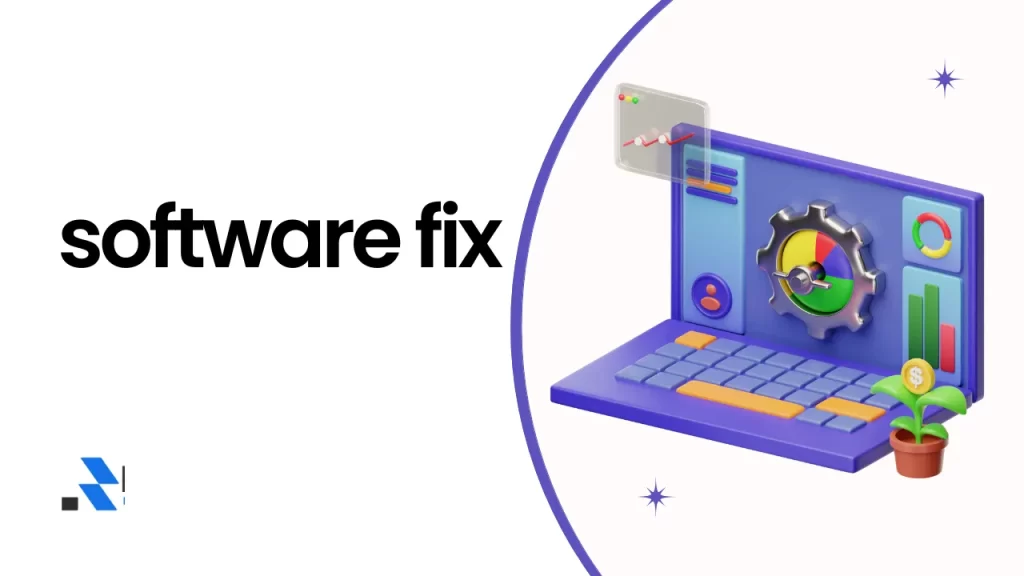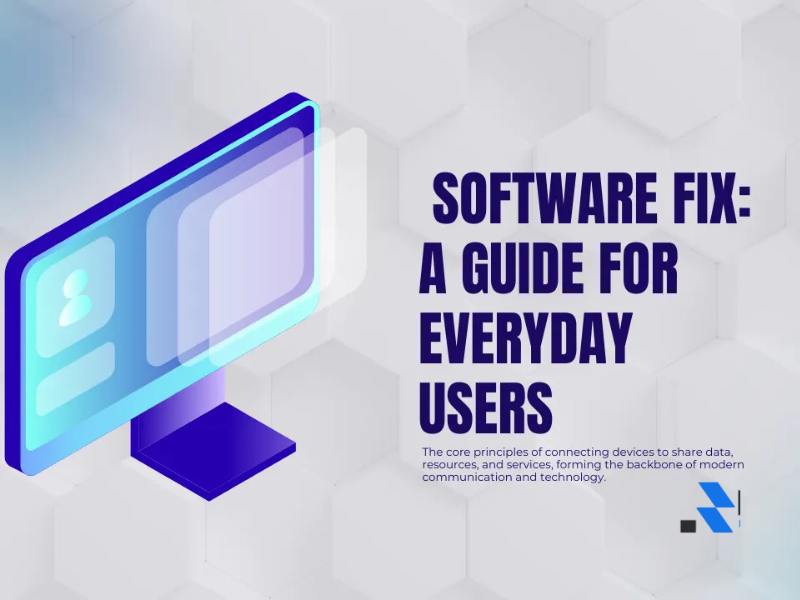Table of Contents
We’ve all been there—clicking a button, expecting something to work, only to be met with an error message. Whether it’s a glitchy app, a frozen screen, or a device that refuses to update, it usually means one thing: you need a fix.
In the world of technology, a software fix is more than just a patch; it’s what keeps your digital life running smoothly. Let’s explore what this really means and how it can help you avoid frustration and wasted time.
Why Things Go Wrong with Software
Software, like any tool, isn’t perfect. It’s built by people, and sometimes mistakes happen. Maybe a file didn’t install correctly, or an update caused a conflict with your system. Bugs are common, and they can show up in many forms—from a minor annoyance to a full system crash.
Even new software can need adjusting after it’s been released. That’s where a software fix comes in, helping correct these issues without needing to replace the whole program.
How Updates Keep Things Running Smoothly

Most devices today are set to update automatically. These updates often contain software fix that solve problems reported by users. For example, if a game keeps crashing after you open it, a new update might include a fix for that bug.
These updates also help protect your computer or phone from security threats. A software fix can close “holes” in the system that hackers might try to use.
Common Signs Something Needs Attention
Not sure if you need a fix? Here are some clear warning signs:
- Your program keeps freezing or crashing.
- You get error messages that weren’t there before.
- Features suddenly stop working or behave strangely.
If something feels “off,” don’t ignore it. Catching problems early makes it easier to find a simple solution.
The Role of Developers Behind the Scenes
Software developers work hard to keep things working. When users report a problem, developers test the program, find the error, and create a solution. This solution—called a software fix—is often shared through an update.
Sometimes, the fix is a simple code change. Other times, it’s a complete overhaul of how a part of the program works. Either way, the goal is to make the software better for everyone.
Also Read: Exploring trwho.com Tech: A Fresh Look at Innovation
How to Find Reliable Help
When a program breaks, you don’t always need to be an expert to get it fixed. Start with the basics:
- Check the software’s website or support page.
- Look for a FAQ or troubleshooting section.
- Download any available updates.
There are also forums where other users share their solutions. You might find that someone has already faced—and fixed—the same issue you’re dealing with.
The Difference Between Bugs and Glitches
These two words are often used the same way, but they mean slightly different things. A bug is a problem in the code that causes the software to act in the wrong way. A glitch, on the other hand, is usually temporary and might go away on its own. While both can be frustrating, a proper fix is usually the best way to make sure the problem doesn’t come back.
Tips for Preventing Future Issues
You can’t always avoid software problems, but you can take steps to reduce the risk:
- Keep your programs and operating system updated.
- Avoid downloading files from unknown sources.
- Use trusted antivirus software.
- Back up important files regularly.
By staying on top of updates and being careful online, you lower the chance of needing a major fix later.
Real-Life Example: Fixing a Slow Laptop
Take Anna, for example. She noticed her laptop was running slow and taking forever to load apps. At first, she thought it was just old. But after a quick online search, she found a software fix that improved her operating system’s performance.
It turned out a background update had failed, leaving her system incomplete. After installing the proper update, everything started working normally again—no tech support call was needed!
Also Read: Information About Foxtpax Software for Effortless Filing
When to Ask for Professional Help
Sometimes, even with your best efforts, you may not be able to find or apply the right fix on your own. That’s okay.
Professional tech support can:
- Run advanced diagnostics.
- Apply manual fixes or patches.
- Ensure your data stays safe during the process.
Don’t be afraid to ask for help when you’ve tried everything else. A quick fix from a pro might save you hours of frustration.
Staying Safe During the Process
Whenever you’re applying a software fix, safety should come first. Always:
- Back up your files before making changes.
- Use only official updates from trusted sources.
- Avoid “quick fix” tools from unknown websites.
What looks like a solution could actually be a trap, spreading malware instead of solving your problem.
Keep Calm and Apply the Fix
Problems with software are common—but they don’t have to be scary. Whether it’s a small bug or a major issue, there’s usually a fix that can get things back on track. Knowing when to act, where to look, and how to stay safe makes all the difference.
FAQs
How do I fix a frozen computer?
Press Ctrl+Alt+Del to open Task Manager and end unresponsive tasks. If that fails, restart your computer.
Why is my software crashing after an update?
Crashes post-update can result from compatibility issues or bugs. Reinstall the software or check for patches to resolve. Best MacBook Repair Singapore.
How can I fix a slow-running program?
Close unnecessary background apps, update the software, and clear cache or temporary files to improve performance.
What should I do if an app won’t open?
Restart your device, check for software updates, and reinstall the app if necessary to fix launch issues.
How do I fix error messages during installation?
Ensure system compatibility, disable conflicting programs, and run the installer as administrator to resolve errors.

